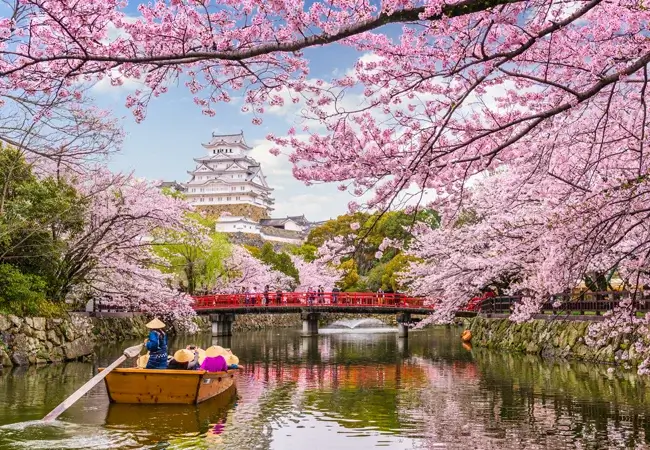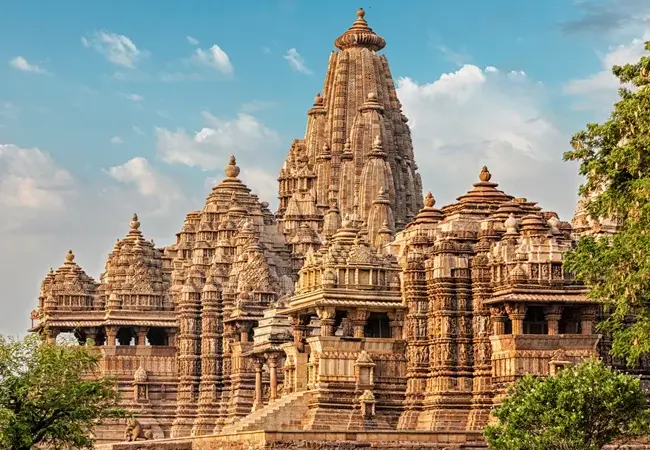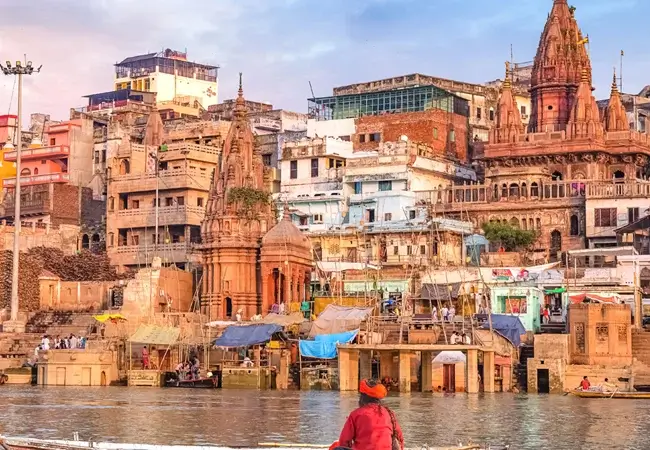Madhya Pradesh has always been the center of attraction of the country since time immemorial. It is the second-largest state in India in terms of area and the fifth-largest state in terms of population, comprising over 72 million residents. It shares its borders with Uttar Pradesh in the northeast, Chhattisgarh in the east, Maharashtra in the south, and Gujarat in the west. Madhya Pradesh is mainly famous for its wildlife having a rich abundance of flora and fauna. Tourists mainly visit the national parks of Madhya Pradesh to witness tigers.
Apart from wildlife, Madhya Pradesh is also known for housing some of the most amazing monuments in the country with architectural excellence, thereby promoting the rich cultural heritage of our history. It is to be noted that this state is home to three sites that have been awarded World Heritage Site status by UNESCO. They are- the Khajuraho Group of Monuments (1986) which also includes Devi Jagadambi temple, Khajuraho Buddhist Monuments at Sanchi (1989), and the Rock Shelters of Bhimbetka (2003). There are other significant scenic sites also such as Ajaigarh, Amarkantak, Asirgarh, Bandhavgarh, Bawangaja, Bhopal, Vidisha, Chanderi, Gwalior, Mandu, Omkareshwar, Orchha and many more.
The locals of Madhya Pradesh also call this town Mandavgad. It is an ancient city located in the Malwa and Nimar region of western Madhya Pradesh, at a distance of approximately 35 km from Dhar city. During the 11th century, this town was considered to be the sub-division of the Tarangagadh or Taranga kingdom. This fortress town is one of the amazing offbeat places in India that tourists can think of exploring as this city is celebrated for its architecture.
Once upon a time, Mandu was a significant place due to its strategic position, along with its natural defenses. This city houses the oldest mosque which dates back to 1405; the finest is the Jama Masjid or great mosque which is a notable and remarkable example of Pashtun architecture.
This palace is considered to be one of the most romantic palaces, speaking of the romantic history of the love that brewed between Baz Bahadur and his love interest Roopmati. Located by the side of the Narmada River and the Nimbar plains, it was originally built as an army observation post and is now known as Roopmati’s Pavilion. This palace is associated with some the famous and interesting historical stories, most of which are tragic. It is considered to be one of the most visited tourist destinations in Mandu due to its brilliant architectural beauty of the early days.

This palace was built during the rule of Mandu King Baz Bahadur. This 16th-century palace has garnered the attention of tourists due to its large courtyards encompassed with large halls as well as high terraces. It is situated just below Roopmati’s Pavilion. It was constructed by Khilji Sultan Nasir-ud-Din between the years 1508-1509 with mixed-style architecture including a glimpse of both Mughal and Rajasthani aesthetics.
This palace remains accessible for tourists from 7 am to 7 pm on all days of the week and is situated at a distance of only 5 km from Mandu Bus Stand.

Shri Mandavgadh Teerth is dedicated to Jain God Lord Suparshvanatha and belongs to the Shwetambar sect of Jainism. The idol of Lord Suparshvanatha inside the temple is white in complexion and is 91.54 cm in height. Inside the same fort, another Jain God’s temple (Lord Shantinath) of a smaller size is present that tourists can visit. This place is also known to contain ruins of many temples and the locals believe that there were almost 700 Jain temples here.

Another major tourist attraction of Mandu is the Hoshang Shah’s Tomb which was India’s first marble structure and is considered to be one of the most refined examples of Afghan architecture. There are many unique features inside this tomb that makes it much more attractive and appealing. The unique features include the beautifully proportioned dome, intricate marble lattice work, and porticoed courts and towers. Moreover, it is known to serve as a template for the Taj Mahal.

The meaning of “Hindola Mahal” is a swinging palace and a large meeting hall that was constructed in the ancient city of Mandu and now is a tourist destination. This palace was built during the reign of Mandu King Hoshang Shah but may date to end of the 15th century during the reign of Ghiyas al-Din. It is considered to be one of a set of buildings making up the royal palace complex at Mandu, which consists of Jahaz Mahal, the Hindola Mahal, the Tavelli Mahal, and the Nahar Jharokha. It may have been used as an audience chamber.
It is to be noted that the architecture of this palace represents the characteristic elements of the architectural style of the Malwa period (1400-1550)- simple, bold yet well-proportioned. The presence of minimal ornamentation has added to its charm, thereby also helping it to stand out boldly through massive inclined buttresses. This palace remains accessible to its visitors from 6 am to 7 pm.

Considered to be Malwa’s medieval capital, Mandu is known to be home to various mouth-watering delicacies that can satisfy the taste buds of the tourists. Common food items of Madhya Pradesh like Poha, Malpua, Kachori etc are available in Mandu. Different region of this state is popular for their own specialities but Mandu is specially famous for its “Baigan ka bharta”, “Dal Bafla” and “Arbi ki sabzi”.

The best time to visit Mandu is from October to March because the winters are considered to be pleasant as summers are scorching and during monsoon, Mandu receives average rainfall.














